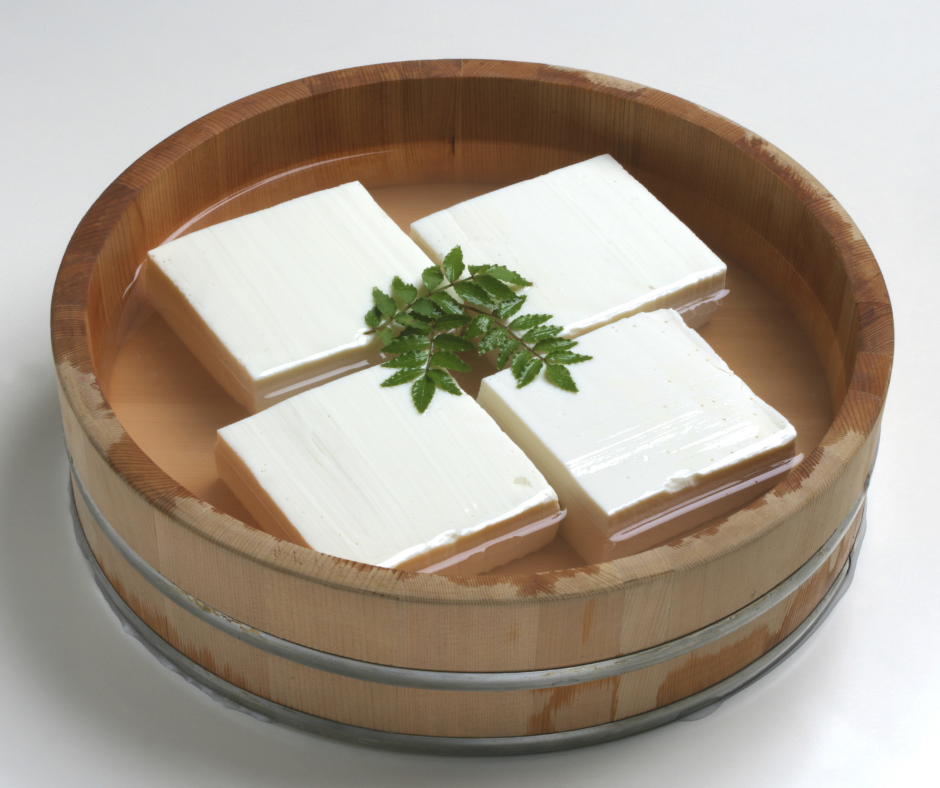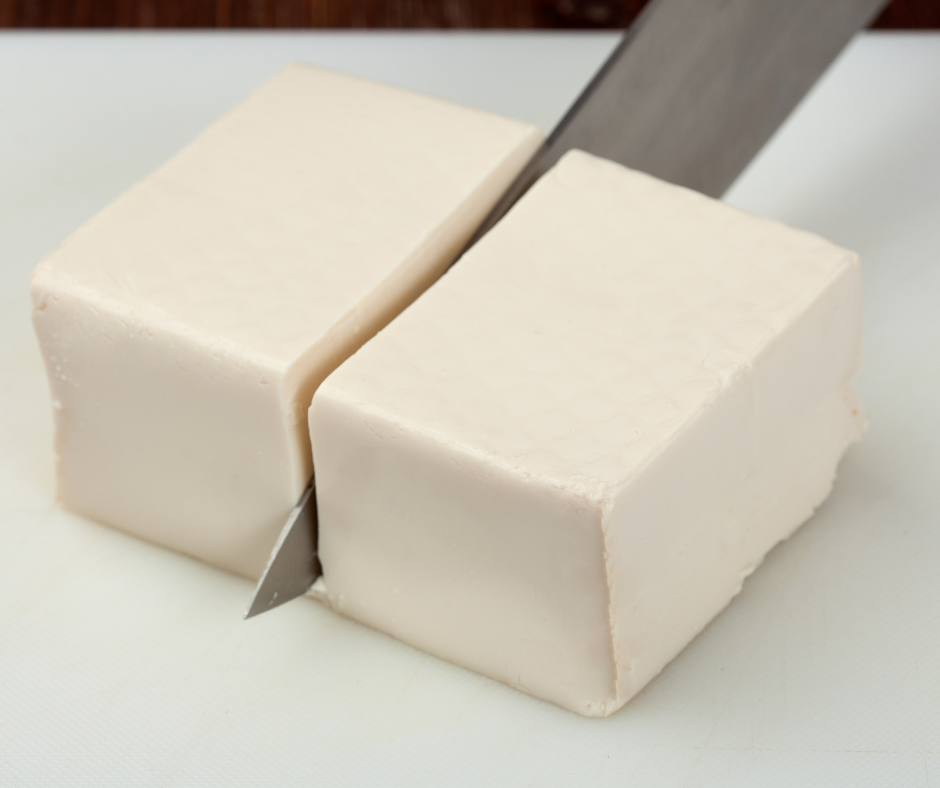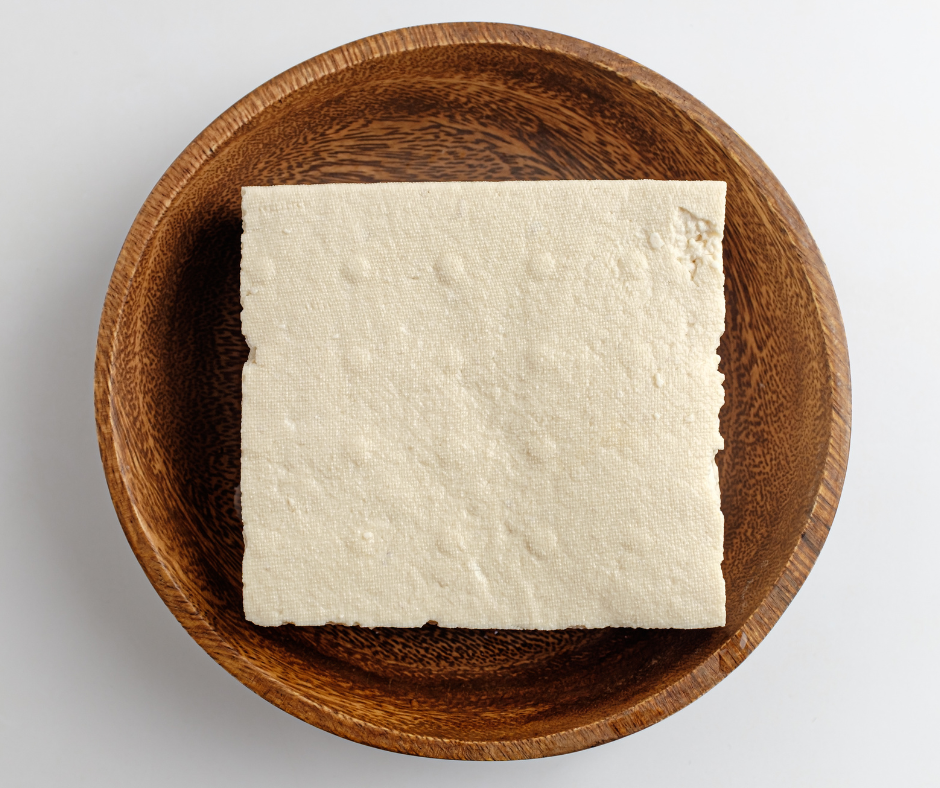Introduction
Bean curd, or tofu, is popular in Chinese and Taiwanese cuisine. It is made from ground-pressed soybeans and has been consumed for over two millennia. Liv Wan, a former professional chef who has published cookbooks about Chinese and Taiwanese cuisine, provides a guide to buying and cooking with bean curd. This article will explore ‘What Is Bean Curd?‘, its significance in Chinese cuisine, and its history and cultural importance.
Overview Of Bean Curd And Its Significance In Chinese Cuisine
Bean curd is a versatile ingredient in various dishes, ranging from soups and stews to stir-fries and salads. It is packed with protein, calcium, and other valuable nutrients, making it a staple food for many in China. In Chinese cuisine, bean curd is often used as a meat substitute because it has a similar texture and can absorb flavors well. It is also a popular ingredient among vegetarians and vegans because of its high protein content.
The History Of Bean Curd And Its Cultural Importance
Bean curd has a long and rich history in Chinese culture. It is believed to have originated in China during the Han Dynasty (206 BCE – 220 CE). Since then, it has been a staple food in Chinese cuisine and used in various dishes for its health benefits.
In Chinese mythology, it is said that the god of agriculture, Shennong, discovered the process of making bean curd accidentally while boiling soybeans. This legend shows how deeply rooted bean curd is in Chinese culture and history. Today, bean curd is still widely consumed across China and other parts of Asia. Its cultural importance and health benefits continue to make it a popular and versatile ingredient worldwide.
What Is Bean Curd?
Bean curd, or tofu, is popular in Chinese and Taiwanese cuisine. It is made from ground-pressed soybeans and has been consumed for over two millennia. Bean curd can be found in various forms, including silken/soft, firm, and extra firm. It is enjoyed both cooked and uncooked and can be fried, steamed, baked, grilled, stewed, or stir-fried. Vegetarians and vegans highly value bean curd because it contains protein and other valuable nutrients.
The Basics Of Bean Curd
Bean curd is a versatile ingredient that is used in many dishes in Chinese cuisine. It has a high protein content and is often used as a substitute for meat. Bean curd also has a texture similar to meat and can absorb flavors well. It can be used in soups, stews, hot pots, and other dishes.
The Production Process Of Making Bean Curd
The production process of making bean curd involves several steps. First, soybeans are soaked in water for several hours to soften them. Then, they are ground into a pulp and mixed with water to make a slurry. The slurry is filtered to remove solid particles, and the resulting liquid is boiled. Coagulating agents such as calcium sulfate or magnesium chloride are added to the boiling liquid, which causes the proteins in the soy milk to thicken. The resulting curds are then separated from the whey and pressed into blocks.
In summary, bean curd tofu has a long-standing history and cultural significance in Chinese and Taiwanese cuisine. It is a versatile ingredient known for its high protein content and can be enjoyed in various ways. Making bean curd involves several steps, from soaking the soybeans to coagulating the proteins.
Health Benefits Of Bean Curd
The Nutritional Value Of Bean Curd
Bean curd, or tofu, is a healthy alternative to meat. It is rich in protein, low in calories and carbohydrates, and a good calcium, iron, and magnesium source. Bean curd is also high in dietary fiber, which helps keep the digestive system healthy and regular. The nutritional value of bean curd can vary slightly depending on the method of production and type of coagulant used.
The Health Benefits Of Consuming Bean Curd
Consuming bean curd can provide a variety of health benefits. It can help reduce the risk of heart disease by lowering bad cholesterol levels and increasing good cholesterol levels. Bean curd can also help reduce the risk of stroke and cancer. It is believed to help regulate blood sugar levels and may also reduce the risk of diabetes. Bean curd may also improve bone health and brain function. Additionally, it can support weight loss as part of a healthy diet and exercise plan.
In summary, bean curd is a nutritious ingredient with various health benefits. It is a good source of protein, fiber, and several essential minerals. Consuming bean curd regularly may help improve overall health and reduce the risk of several chronic diseases.
The Myth Of The Invention Of Bean Curd
The Fabled Mountain Where Bean Curd Was Said To Be Invented
Bean curd, also known as tofu, has a long and fascinating history in Chinese cuisine. One of the most enduring legends surrounding the invention of bean curd is that it originated on a fabled mountain called Mount Meng. According to this legend, the mountain was home to an immortal goddess named Fei, who was revered for her wisdom and knowledge of medicine. It is said that she taught the people of China how to cultivate soybeans and produce bean curd as a source of nourishment and healing.
The Legendary Figures Associated With The Invention Of Bean Curd
Another popular legend surrounding the invention of bean curd involves two legendary figures from Chinese history – Liu An and Wang Xizhi. According to this legend, Liu An was a prince known for loving soybeans. One day, he ordered his cook to find a new way to prepare soybeans, and the cook accidentally curdled them, creating bean curd. Wang Xizhi, a renowned calligrapher, was said to have been a devotee of bean curd, and his calligraphy was often used to extol the virtues of this beloved food.
Despite the myths and legends surrounding its origins, bean curd remains a popular and nutritious food today. With its high protein content, low-calorie count, and numerous health benefits, it is no wonder that this ancient food has endured for over 2,000 years. Whether enjoyed independently or incorporated into various dishes, bean curd is a versatile and beloved ingredient in Chinese cuisine.
Types And Variants Of Bean Curd
An Introduction To The Different Types Of Bean Curd
Bean curd, also known as tofu, is a staple in many Asian cuisines and is enjoyed by people worldwide. There are many types and variations of bean curd, but the two most common are white fermented bean curd and red fermented bean curd. White fermented bean curd can be eaten straight from the jar or used as a flavoring for dipping sauces and marinades, while red fermented bean curd is often used as a meat substitute due to its savory flavor. Other popular types of bean curd include firm tofu, silken tofu, and dried tofu sheets.
The Variations In Texture And Flavor Of Bean Curd
The texture and flavor of bean curd can vary depending on the type and preparation method. Firm tofu, for example, has a denser texture and can hold its shape well when cooked, making it a popular choice for stir-fries and grilled dishes. On the other hand, silken tofu has a softer texture and is often used in soups and smoothies. Dried tofu sheets have a chewy texture and are used as a meat substitute in dishes like vegetarian stir-fries.
Regarding flavor, unflavored bean curd has a slightly nutty taste and is often used as a blank canvas to absorb the flavors of spices, sauces, and other ingredients. Flavored bean curds, such as those infused with garlic or chili, offer a more assertive taste and can add depth to dishes.
In conclusion, the versatility and wide range of types and flavors of bean curd make it a popular ingredient in many cuisines. Whether you prefer a soft and silky texture or a firmer, chewier bite, there is a type of bean curd out there to suit your preferences.
Cooking With Bean Curd
Popular Recipes Featuring Bean Curd
Bean curd is a versatile ingredient used in various savory and sweet dishes. Here are a few popular recipes featuring bean curd:
- Mapo tofu: a spicy Sichuan dish made with ground pork, tofu, and fermented black beans.
- Miso soup with tofu: a Japanese classic soup made with miso paste, tofu, and scallions.
- Buddha bowls with tofu: a healthy and colorful meal made with a bed of cooked quinoa, roasted vegetables, avocado, and fried tofu cubes.
- Chocolate tofu pudding: a vegan and dairy-free dessert made with soft silken tofu, cocoa powder, and sweetener.
The Versatility Of Bean Curd In Chinese Cuisine
Bean curd is a staple ingredient in Chinese cuisine used in various dishes. It is often used as a meat substitute in vegetarian and vegan dishes due to its high protein content. In Chinese cuisine, bean curd can be stir-fried, deep-fried, braised, steamed, and used in soups.
One popular Chinese dish featuring bean curd is Ma Po Tofu, a spicy and flavorful Sichuan dish made with ground pork, bean curd, and chili paste. Another popular dish is mapo doufu, a spicy Sichuan dish made with bean curd, minced meat, chili oil, and Sichuan peppercorns.
In addition, bean curd can be used to make vegetarian dumplings, fried snacks, and steamed dim sum. It can also be added to a hot pot or as a soy or oyster sauce side dish.
In conclusion, bean curd is a versatile ingredient used in various dishes. Whether you prefer it in savory or sweet dishes, there is a recipe to suit your preferences.
Bean Curd Around The World
The Spread Of Bean Curd Across Different Countries
Bean curd, or tofu, originated in China over 2000 years ago. Since then, it has spread worldwide and become a staple ingredient in many cuisines. Bean curd arrived in the West in the late 18th century, but it wasn’t until the second half of the 20th century that it gained popularity among Western consumers. It was particularly popularized through health food shops and the wider acceptance of vegetarianism and veganism.
Bean curd production quickly spread throughout Southeast Asia, where it remains a popular ingredient. Some historians theorize that bean curd was brought to other countries alongside the spread of Buddhism, as it was a favored food of Buddhist vegetarians. Today, bean curd is enjoyed worldwide, from Asia to North America, Europe, and beyond.
The Adaptations Of Bean Curd In Various Cuisines
The adaptability of bean curd has made it a versatile ingredient in global cuisine. In Chinese cuisine, bean curd is often used as a meat substitute in vegetarian and vegan dishes. It is also commonly used in stir-fries, soups, and dim sum. In Japanese cuisine, bean curd is used in miso soup and agedashi tofu dishes.
In Korean cuisine, sundubu jjigae is a spicy stew made with soft tofu. In Southeast Asian cuisine, dishes like pad Thai and laksa often feature fried or grilled tofu. In Western cuisine, bean curd is often used as a substitute for dairy products in vegan dishes such as tofu scrambles and quiches.
In conclusion, bean curd has become popular worldwide due to its versatility and high protein content. From spicy Sichuan dishes to vegan desserts, bean curd can be adapted to suit various tastes and dietary preferences.
The Cultural Significance Of Bean Curd
The Symbolism And Cultural Importance Of Bean Curd In Chinese Culture
Bean curd, or tofu, has been integral to Chinese cuisine and culture for over 2000 years. It is a staple food item and holds symbolic and cultural significance. In Chinese culture, bean curd is associated with humility, as it is a simple and unassuming food. Its soft and pliable texture represents flexibility and adaptability, values admired in Chinese culture for centuries.
Bean curd is also connected with Buddhism, one of the major religions in China. Buddhist vegetarian diets endorse the consumption of bean curd because it is a protein-rich and meat-free food. Additionally, the texture and color of bean curd imply purity and simplicity, which aligns with the principles of Buddhism.
Bean Curd In Literature, Art, And Religion
Bean curd has constantly been celebrated in literature, art, and religion. During the Tang dynasty (618-907 AD), the poet Bai Juyi wrote a famous poem titled “Ode to Tofu,” expressing his appreciation for the humble and nutritious food. In traditional Chinese paintings and sculptures, bean curd is often depicted as a subject matter due to its simple yet beautiful form.
In religion, various Taoist and Buddhist texts have mentioned bean curd in their teachings, emphasizing the dietary and spiritual benefits of consuming plant-based foods like tofu. Not only is bean curd used in vegetarian diets as a protein source, but it is also considered a food for the soul and a sign of humility.
In conclusion, bean curd is a nutritious, versatile food in Chinese cuisine and a significant cultural symbol. Its adaptability, flexibility, and health benefits have solidified its place in Chinese culture and history.
The Cultural Significance Of Bean Curd
The Symbolism And Cultural Importance Of Bean Curd In Chinese Culture
Bean curd, or tofu, has been a fundamental part of Chinese culture and cuisine for over 2000 years. It is known not only for its nutritional value but also for its cultural and symbolic significance. In Chinese culture, bean curd represents humility since it is a simple and unassuming food. With its soft and pliable texture, it represents adaptability and flexibility – virtues that have been valued in Chinese culture for centuries.
Bean curd is also associated with Buddhism, one of the main religions in China. Buddhist vegetarianism promotes the consumption of bean curd since it is rich in protein and meat-free. Furthermore, its texture and color represent purity and simplicity, which align with Buddhist principles.
Bean Curd In Literature, Art, And Religion
Bean curd has been celebrated in literature, art, and religion. During the Tang dynasty (618-907 AD), the famous poet Bai Juyi wrote “Ode to Tofu,” expressing his admiration and appreciation for the humble yet nutritious food. Bean curd is also often depicted in traditional Chinese paintings and sculptures due to its simple yet beautiful form.
In religious contexts, various Taoist and Buddhist texts have mentioned bean curd and emphasized the dietary and spiritual benefits of consuming plant-based foods like tofu. Bean curd is used not only in vegetarian diets as a protein source but also as a food for the soul and a symbol of humility.
Conclusion
The Enduring Legacy Of Bean Curd
Now you should know ‘What Is Bean Curd?’. Bean curd and tofu are versatile and nutritious soy products that offer many benefits to individuals seeking to include them in their diets. These foods have a rich cultural history deeply embedded in Chinese tradition, art, and religion. Despite cultural and regional variations, the widespread popularity of bean curd and tofu has persisted over time and contributes to culinary innovations globally.
Final Thoughts And Reflections On The Cultural Significance Of Bean Curd
Through its long-standing cultural and symbolic significance in Chinese culture, bean curd has become much more than a simple food item. Its history and versatility continue to make it an essential part of many culinary traditions worldwide. Despite different regional variations in recipes and styles, its enduring popularity remains a testament to its rich cultural heritage.
FAQ: What Is Bean Curd: A Tofu Tale Unveiled
Q: What is bean curd?
A: Bean curd, or tofu, is a protein-rich food product made by curdling soy milk.
Q: Where did tofu originate from?
A: Tofu is said to have been invented on a fabled mountain in China, where Prince Liu An first made it during the Han dynasty (206 BCE – 220 CE).
Q: What are the different forms of tofu available?
A: Tofu is available in various shapes, textures, and forms. The two main types are silken and firm, with firm tofu being denser and more rigid than silken.
Q: What are the health benefits of eating tofu?
A: Tofu is a great source of protein and has been linked to reducing the risk of heart disease and cancer. It is also a good source of iron and calcium.
Q: Is tofu suitable for vegans and vegetarians?
A: Yes, tofu is a popular food choice for vegans and vegetarians as it is made from soybeans and does not contain any animal products.
Q: How can tofu be cooked?
A: Tofu can be cooked in various ways, including frying, baking, grilling, and stir-frying. It can also be used in recipes as a meat substitute.
Q: Are there any side effects of eating tofu?
A: Tofu is generally considered safe to eat, although some individuals may experience digestive problems if consumed in large quantities or have a soy allergy.
Q: Where can I buy tofu?
A: Tofu can be found in most grocery stores, health food shops, and Asian supermarkets. It is also widely available online.



